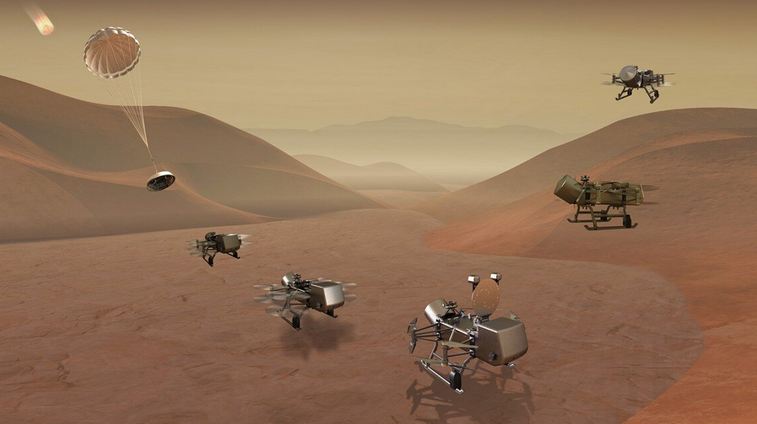As the Universe unfolds fiercely right before our eyes, we could only wonder, what’s really hiding there and how we can take a glimpse of it.
NASA came up with quite the goal: exploring the moon Titan. The moon is one of the most peculiar moons from our Solar System, mainly because it might host some kind of life.
What are NASA’s plans, and how it intends to get there?
Here is what you need to know.
One Dragonfly For Titan: New NASA Mission
NASA is now working on a mission to get a lander for the first time to Titan’s surface. Saturn’s moon is known for its weather system, much similar to ours, and methane rain.
If the space agency succeeds in setting up its goals, we could see the Dragonfly mission finally reaching Titan in the mid-2030s.
Dragonfly mission explained
The Dragonfly Titan Rotorcraft Relocatable Lander is NASA’s recent mission to explore Saturn’s moon, Titan. As you can see below, the lander is quite the monster:

But Dragonfly has some goals to match its proportions. NASA apparently made sure to create the most invincible lander for:
- spending a full Titan day (16 Earth days) in one location;
- conducting observations and experiments;
- flying to a new area;
- searching for chemical biosignatures;
- exploring the prebiotic chemistry in Titan’s atmosphere and on its ground;
- examining the moon’s active methane cycle.
Alex Hayes is a Dragonfly co-investigator. He recently released a statement:
“[…] The science question we have for Titan are very broad because we don’t know much about what is actually going on at the surface yet.”
So, the mission is quite tough, and Titan is somehow NASA’s utopia.
However, one of the most challenging tasks the Dragonfly mission will experience is to search for chemical biosignatures. It’ll also examine if there are any potential chemical biosignatures from the past or present.























Leave a Reply